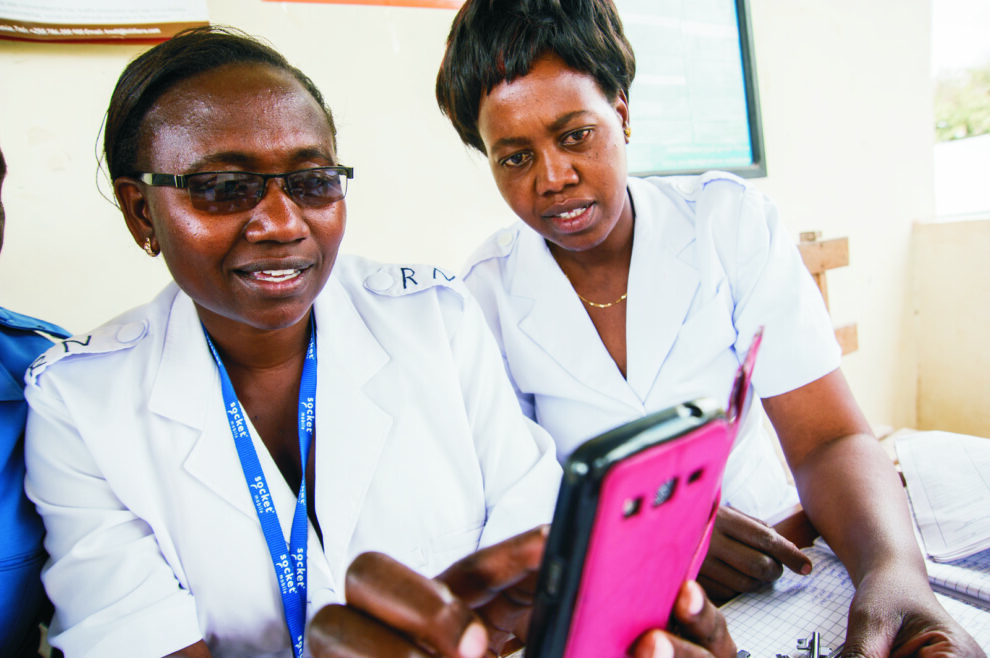In May 2023, the Uganda Ministry of Health (MOH) inaugurated the National Health Information and Digital Health Strategic Plan. Aligned with the National Development Plan, this initiative is underpinned by an ambitious goal—to contribute substantively to Universal Health Coverage.
The plan seeks to accelerate access to quality-assured data, institutionalize patient-level digital systems at the point of care, fortify the implementation environment for Health Information Systems (HIS) and digital health initiatives, and cultivate effective collaborative mechanisms within the health sector, by 2025.
The strategy is poised to function as a guiding compass to harness the potential of health information systems and digital health innovations. This concerted approach is expected to invigorate health systems, break away from the redundancy of proof-of-concept initiatives, and shift the focus to scalable technologies that are additive to the efficiency of health service delivery and create sustainable value for health systems.
5 Key Points from Uganda’s Digital Health Strategy
The launch illuminated some of the pivotal facets of the strategic plan. Reflecting on these highlights, here are the key takeaways and a few considerations about Uganda’s ever-evolving digital health and health information landscape:
1. Digitalization Doesn’t Mean Confusion
Digital health strategies have emerged as pivotal components for health systems, steering countries towards achieving sustainable development goals, and have enormous potential to improve health service delivery in resource-constrained settings. These interventions improve the efficiency, effectiveness, and accessibility of healthcare services.
Notably, their impact came to the forefront during the COVID-19 pandemic, where digital health innovations played a pivotal role in disseminating crucial information about prevention, diagnosis, and treatment.
Over the past decade, Uganda has been a hub for piloting more than 50 digital health innovations. However, many of these are now deemed redundant. Often clouded by confusion and chaos, the digital health space has been further constrained by the reluctance of partners to integrate their interventions into the national systems.
But following years of what has been colloquially termed as ‘pilotitis’, it’s time to consolidate efforts, and transcend the stage of pilot-centric innovations. The government is calling for synergy and harmonization and wants to pivot towards scalable solutions, integrate systems, and strengthen strategic partnerships for sustainability.
Dr. Diana Atwiine, the Permanent Secretary of the Ministry of Health, comments:
“Digitalization is the oxygen we need to breathe life into our health systems, but we must harmonize our strategies. Digital need not be synonymous with confusion”.
In essence, the era of ‘pilotitis’ is now giving way to a new chapter, one that is marked by a unified vision to optimize health systems through the strategic fusion of digital health advancements. Yet, whether this move can truly foster transformative change remains uncertain given that this is not the first time that the government has pronounced a moratorium on digital health pilots.
2. Unifying Health Investments for Pandemic Resilience
The concept of integrating health information systems can be illustrated through the lens of disease surveillance. In 2002, Uganda adopted the World Health Organization’s Integrated Disease Surveillance and Response (IDSR) framework. Subsequently, similar frameworks for HIV/TB and Malaria systems emerged with support from PEPFAR and the global fund.
In 2012, the DHIS2 platform was launched, primarily intended as a tool for national health information management and disease surveillance. The stride continued with the introduction of the Public Health Emergency Operations Center (PHEOC) in 2013, serving as a platform for surveillance and coordination during disease outbreaks. Disease surveillance systems are pivotal data sources and a key consideration for national data warehousing.
Fast-forwarding to 2023, these systems have matured and evolved into isolated repositories of information, set against the backdrop of fragmented funding mechanisms. In moments of crisis, such as disease outbreaks, these shortcomings become pronounced, underlining the need for system integration.
The government is working with partners to bolster Health Information Exchange (HIE) systems and establish robust data warehousing as foundational pillars for a continuum of health information sharing. By fostering synergy, the government aims to transform Health Information Systems into a comprehensive resource for decision-making, policy formulation, and rapid response during emergencies.
3. We Must Make the Data Talk
Over the last decade, health information systems have predominantly operated in a reactive mode. These systems were primarily designed to collect data for central decision-making mechanisms, often neglecting the crucial aspect of improving programs at the local level.
The correlation between the effective use of data and program improvement has been well-documented and there’s a growing consensus to democratize health data and ensure that all stakeholders are empowered to use the data, including those at the point of data collection. If data isn’t limited to national program managers and policymakers, it becomes a powerful tool for program optimization.
A Living Goods representative comments:
‘We must create systems that enable us to use the data for action, and we can no longer afford to be happy with only data collection. We must make the data talk’.
In this context, a paradigm shift is required in the design of health information systems – moving from reactive to proactive approaches, creating platforms that empower local actors, and ensuring that data collection investments translate into tangible improvements in service delivery and health outcomes.
4. Exploring AI-Driven Breakthroughs
A key challenge with digital health innovations is their tendency to offer isolated solutions, limiting their scalability. Going forward, the government will prioritize the evaluation of new innovations to assess their feasibility, effectiveness, and sustainability within the country’s context.
This forward-looking approach is complemented by the exploration of Artificial Intelligence (AI) advancements to enhance healthcare delivery. An intriguing avenue being explored is the use of chatbots to offer timely information and support to regions that conventionally face challenges in accessibility.
The concurrent emphasis on implementation research underscores the government’s commitment to ensuring that these technologies are not just conceptually sound but also practical in real-world settings.
5. Beyond the Illusion of a Magic Bullet
The enthusiasm for deploying Digital Health Interventions (DHIs) largely stems from the assumption that good technologies will inevitably become successful. Undoubtedly, DHIs are powerful tools that can enhance health system efficiency but they should not be perceived in isolation.
Many innovations falter when it comes to adoption and sustainability and this often happens because some of the key prerequisites for digital success are simply lacking. A pertinent example is the inadequacy of competencies and training, not only for the informatics workforce but also for the health workers who use these technologies.
We need to closely examine the skills gap and make the necessary investments to ensure that health workers have the requisite skills not only to use these technologies but also to interact with them effectively.
Looking ahead, questions on data privacy and security come to the forefront as we approach the era of digital transformation. Do the public and patients have access to all the information they need about digital health ecosystems? Do patients have control over their own data, including the ability to decide who has access to this data and how it is utilized?
Source : ICT Works











